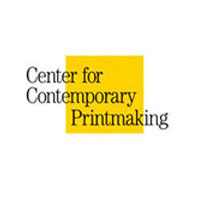
Entries from October 1, 2011 - October 31, 2011
KHS 2012 New England photo calendar now available
House Enthusiasts interested in savoring the sight of New England vernacular buildings, landscapes, seascapes, and gardens all year might want to consider the new Katie Hutchison Studio (KHS) 2012 calendar. Drop by the KHS Lulu storefront to get a preview of the full-color photos on the 13.5" x 19" calendar. Christmas is just around the corner, hint, hint.
by Katie Hutchison for House Enthusiast
How to look at houses... (like an architect)
Base II
Here's the second video in the series. This installment continues the discussion of the base of home -- focusing on foundation piers, openings, areaways, and bulkheads.
Future episodes will further explore exteriors as they relate to the hierarchy of base, middle, and top. If you would like to recommend a project to be referenced in a future video installment, please email it to Katie@katiehutchison.com. You can also find this video posted to the Fine Homebuilding Square One blog here. Meanwhile, keep training your eye on houses.
by Katie Hutchison for House Enthusiast and SquareOne
Exhibit: Jack Boul: Intimate Scale -- Paintings, Sculptures, Monotypes
Center for Contemporary Printmaking, Norwalk, Connecticut
September 18 – November 13, 2011
 This extensive exhibit includes more than 150 small works by Jack Boul, an under appreciated, retired, arts professor living in Bethesda, Maryland. It’s the monoprints that grabbed my attention. I’ve never made one myself, but having seen those by Boul, I’m eager to give it a try. Boul’s monoprints employ a minimalist color palette of black and white, or sepia and white, and express light, shadow, and mood with deft tonality.
This extensive exhibit includes more than 150 small works by Jack Boul, an under appreciated, retired, arts professor living in Bethesda, Maryland. It’s the monoprints that grabbed my attention. I’ve never made one myself, but having seen those by Boul, I’m eager to give it a try. Boul’s monoprints employ a minimalist color palette of black and white, or sepia and white, and express light, shadow, and mood with deft tonality.
I was particularly drawn to his interior scenes of solitary figures in domestic spaces. My favorite, “Washing Dishes” (2005, Monoprint) evokes many of the same qualities architects negotiate in home design. As I describe in Timeless reveries in interiors art, opportunities for prospect, refuge, enticement, peril, and complex order (all identified in House Thinking), which are key to compelling architecture, are key to compelling interiors art, as well.
In “Washing Dishes” we can imagine that the kitchen window offers prospect for the dishwasher, while light from that window entices the viewer into the scene. The context of the kitchen evokes the comfortable refuge at the familiar heart of most homes. There’s even a hint of mystery (if not peril) in the dark recesses of the kitchen, and in what the lone dishwasher may be thinking as he or she goes about a habitual task. The attention to composition, context and technique communicate a complex order. Boul’s treatment of his subject, like many interiors artists before him, elevates the quotidian to the noble. We can’t help but connect to the humanity of this image. I could swear it depicts my inimitable mother. It is at once universal and intimate.
Boul’s monoprints are even created in much the same manner as residential architecture -- by manipulating figure and ground, balancing the subtractive and additive, harnessing daylight and shadow, orchestrating movement, and exhibiting craftsmanship and the artistry of the human touch.
Keep in mind; this is just one image of dozens. Mark your calendar. You’re sure to find something at the Boul exhibit that speaks to you. Tell me about it on the KHS Facebook Page.
by Katie Hutchison for House Enthusiast
Design snapshot: Alley gateway
 Passersby simply can’t help but glimpse down this alley. It’s human nature to scan our environment to note differentiation. It’s how we orient ourselves, and in an evolutionary sense, it’s probably one way we seek to protect ourselves. Walk along a streetscape of densely sited buildings, which suggest a wall of sorts fronting a sidewalk, and you’ll find yourself noticing the spaces in between, becoming curious about them, in part because they’re different.
Passersby simply can’t help but glimpse down this alley. It’s human nature to scan our environment to note differentiation. It’s how we orient ourselves, and in an evolutionary sense, it’s probably one way we seek to protect ourselves. Walk along a streetscape of densely sited buildings, which suggest a wall of sorts fronting a sidewalk, and you’ll find yourself noticing the spaces in between, becoming curious about them, in part because they’re different.
The treatment of this alley elegantly feeds and thwarts such curiosity. The wrought-iron gateway defines a visually permeable and gracious threshold. A potted plant in front of the left-hand gate adds a touch of domesticity, its leaves playing off the scrolling, swirling patterns of the ironwork. Its placement also conveys that the right-hand gate is the operable one, should we gain permission to enter. The elliptical moon gate design sharpens our focus on what lies yonder, temptingly close, but off limits to the uninvited. Sunlight beyond the adjacent building’s shadow beckons. What appears to be an elegant parking court, edged by a fence brimming with blossoming flowers, and a brick residence perhaps adapted from a utilitarian use teases our natural inquisitiveness. Yet we stand in the public realm while the gate marks the transition to the private realm beyond.
This alley gateway brilliantly tempts and denies. Read more about “Transitioning with exterior gateways” in my Drawing Board column for Fine Homebuilding here. Issue #218, April/May 2011. Reprinted with permission copyright 2011, The Taunton Press, Inc.
by Katie Hutchison for House Enthusiast















